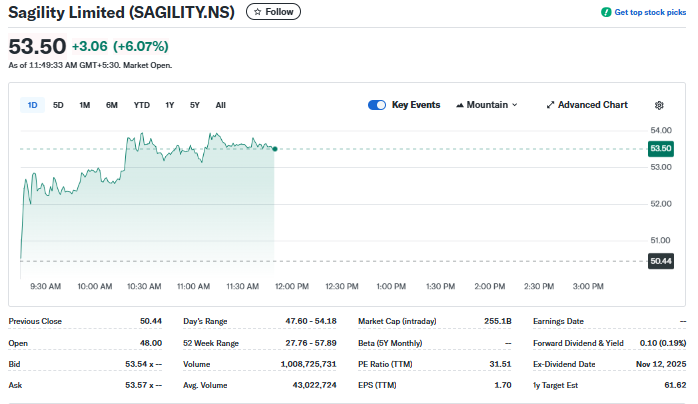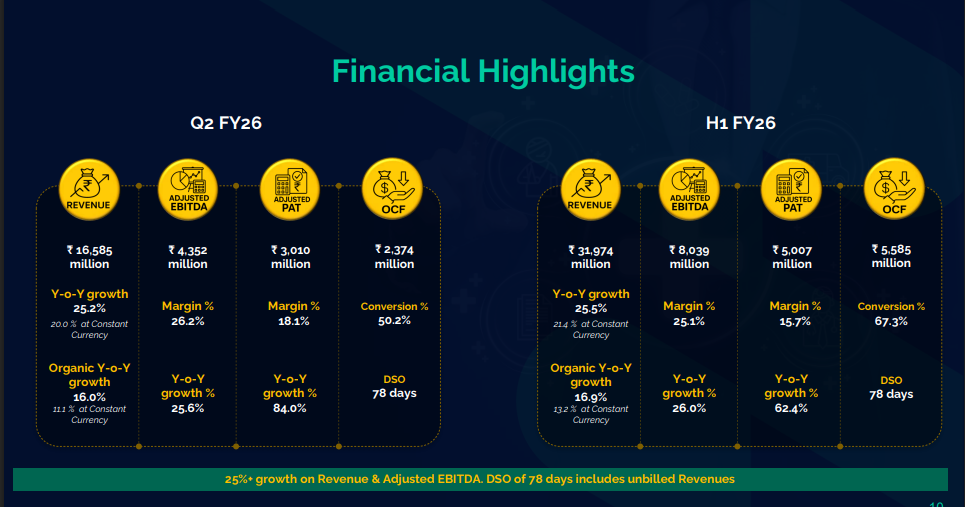Sagility Shares Gain 5% Following Major ₹3,600 Crore Promoter Stake Sale
On 14 November 2025, shares of Sagility India Ltd. surged by about 5 % after the company’s promoter announced a major stake sale valued at ₹3,600 crore. The deal involves a bulk of shares being offloaded in block transactions, which immediately caught the market’s attention. The move signals a potential shift in shareholding structure and liquidity for Sagility.
For investors and market watchers, this event presents both opportunities and questions: Why now? What does it mean for Sagility’s future?
Background and Deal Structure
The block transactions included multiple trades across the day. Reports say roughly 2.2 crore shares changed hands in these deals, as buyers absorbed the large seller blocks. The sale followed earlier promoter divestment plans this year, when Sagility B.V. had signalled OFS and block-sale activity to meet public-holding norms and lock-step investor exits.
Immediate Market Reaction

The Sagility shares spiked soon after the deals were reported. Intraday highs touched the low-to-mid ₹50s, before settling with a net gain near 5% on the session. Volume shot above the recent average as institutional and high-net-worth participants moved into the script. Financial portals tracked the surge and the block-deal prints in real time.
Why does the price move up, not down?
Large promoter sales usually push prices down. This time, the stock rose because buyers bid aggressively. The market interpreted the sale as increasing free float and improving liquidity. Some traders read the move as an opportunity to own shares now that more stock will be available to public investors. Another positive signal was the strong recent operating performance that left many investors willing to buy on any dip.
Company Financials that Matter

Sagility reported much stronger earnings earlier this season. In Q2 FY26, the company posted a sharp rise in profit and healthy revenue growth versus year-ago numbers. The better earnings helped steady sentiment during the seller-driven action. Independent data sites show the company has reduced leverage in recent quarters while expanding revenue streams in its core tech-enabled services.
Shareholding and Governance Implications
Promoter holding has been shrinking over the past year. Public ownership rose after earlier offers for sale. After the ₹3,600 crore block transactions, promoter stake fell further in percentage terms, though promoters continue to hold a material stake. This re-distribution matters for governance because a higher public float brings closer analyst scrutiny and a wider investor base.
How to Read the Long-term Signal?
A promoter sale of this size is material. On one hand, it unlocks liquidity and allows large funds to build positions. On the other hand, it raises the question of whether more selling could follow. The healthy earnings make the sale less alarming for long-term holders. Still, retail investors should note that price swings can be sharper while block deals continue to filter into the market.
What to watch next?
Watch the company’s exchange filings for exact quantities and any follow-up OFS or block-sale notices. Quarterly updates and any management comments on capital allocation will be key. Also track institutional filings to see which funds bought the stock. Finally, monitor broader sector cues; any slowing in client demand for tech-enabled healthcare services could change the outlook quickly.
Risks to Keep in Mind
If the block buyers were short-term arbitrage funds, future selling could pressure the price. Macro risk and volatility in the IT services and healthcare tech space can also undo short-term gains. A sizable promoter exit, if continued, would raise questions about insider conviction over time. Careful attention to quarterly margins and client concentration is important before adding exposure.
Analyst and Market Comments
Broker notes and market feeds described the day as a classic liquidity event. Some brokerages flagged the trade as large but not necessarily negative because promoter holdings remain above critical governance thresholds. Others suggested revisiting valuation after the next quarterly numbers. Real-time market trackers and exchange prints provided the main evidence used by analysts.
Closing Note
The ₹3,600 crore promoter sale on 14 November 2025 changed Sagility’s trading landscape. The move raised free float and drew fresh buyers. Recent strong earnings softened immediate concerns. Still, continued promoter selling or large short-term holders could add volatility. Investors should read exchange disclosures, check upcoming results, and use disciplined position sizing. An AI stock research analysis tool may help flag large block prints and buyer identities quickly for those who follow the name.
Frequently Asked Questions (FAQs)
Promoters sold the shares on 14 November 2025 to bring more liquidity into the market. The company did not share a clear reason, so the move remains neutral for now.
The stock rose on 14 November 2025 due to strong buying. Future movement depends on market demand, earnings, and news. Prices can go up or down based on sentiment.
A large sale can create short-term swings. But it also increases public holdings. Retail investors should wait for updates and watch the next earnings before making decisions.
Disclaimer: The content shared by Meyka AI PTY LTD is solely for research and informational purposes. Meyka is not a financial advisory service, and the information provided should not be considered investment or trading advice.






